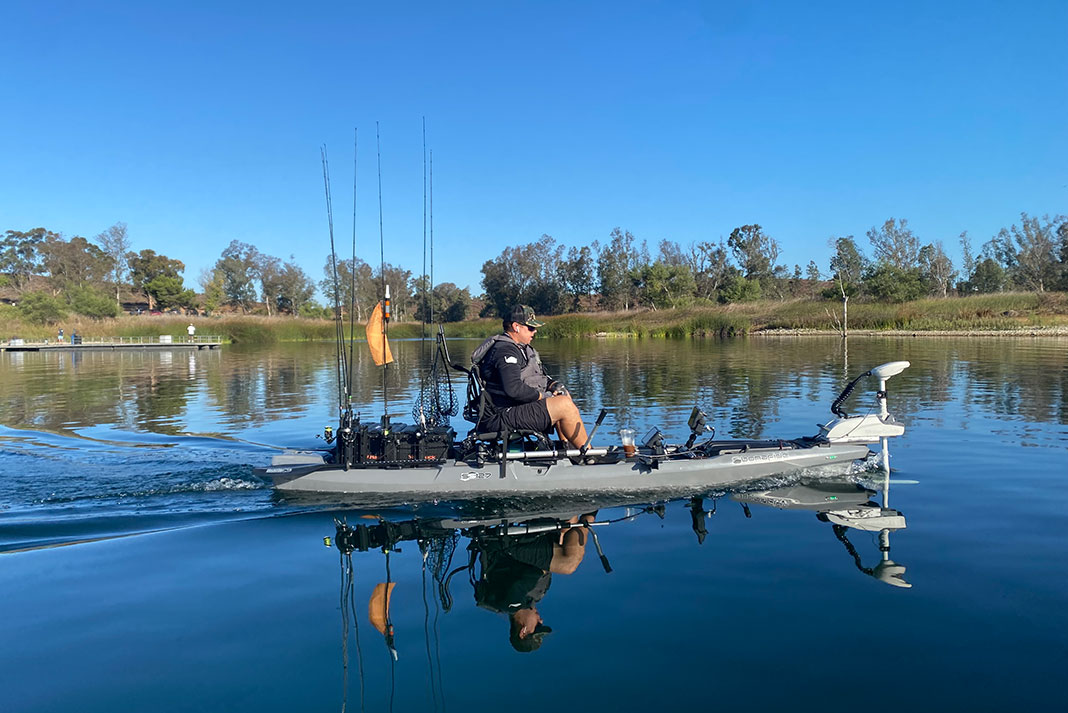Battery power is the only limit to how far you can rig a fishing kayak with electric motors, fish finders, GPS, lights and cameras. To meet the need, a new generation of smaller, lighter and more powerful batteries are designed for kayak fishing. Whether you need a small battery to power a fish finder or you’re looking for a more powerful battery to run electric motors, electronics and other accessories, there is a safe and efficient way to power your kayak fishing dreams.
Top Picks: Best Kayak Batteries for 2024
The following kayak batteries have received the highest star ratings from reviewers in our Kayak Angler Buyer’s Guide. See and review all batteries here.
Best Kayak Batteries
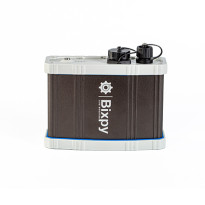
PP-77-AP - 12V and USB Outdoor Power Bank
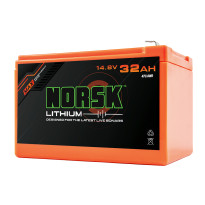
14.8V 32ah Battery
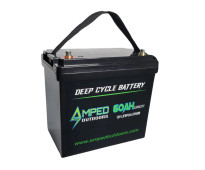
12V 60ah Kayak Edition Bluetooth
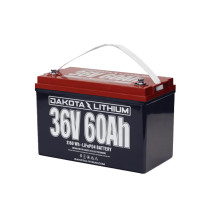
36V 60ah Battery
Shop for a Kayak Battery
Follow the links below in to the Kayak Angler Buyer’s Guide where you’ll find kayak batteries along with specs, prices, reviews and places to buy.
Kayak Battery Buying Guide
How much power? How many amp hours? What size? What type? Choosing a battery for your boat can be complicated, but answering a few questions clears the water.
The first question is voltage—or the power output of the battery. Kayak batteries are available in 12-volt, 24-volt and 36-volt models. A 12-volt battery powers electronics and lights. Most trolling motors require a 12-volt battery. Larger electric outboards may require a 24 to 36-volt battery.
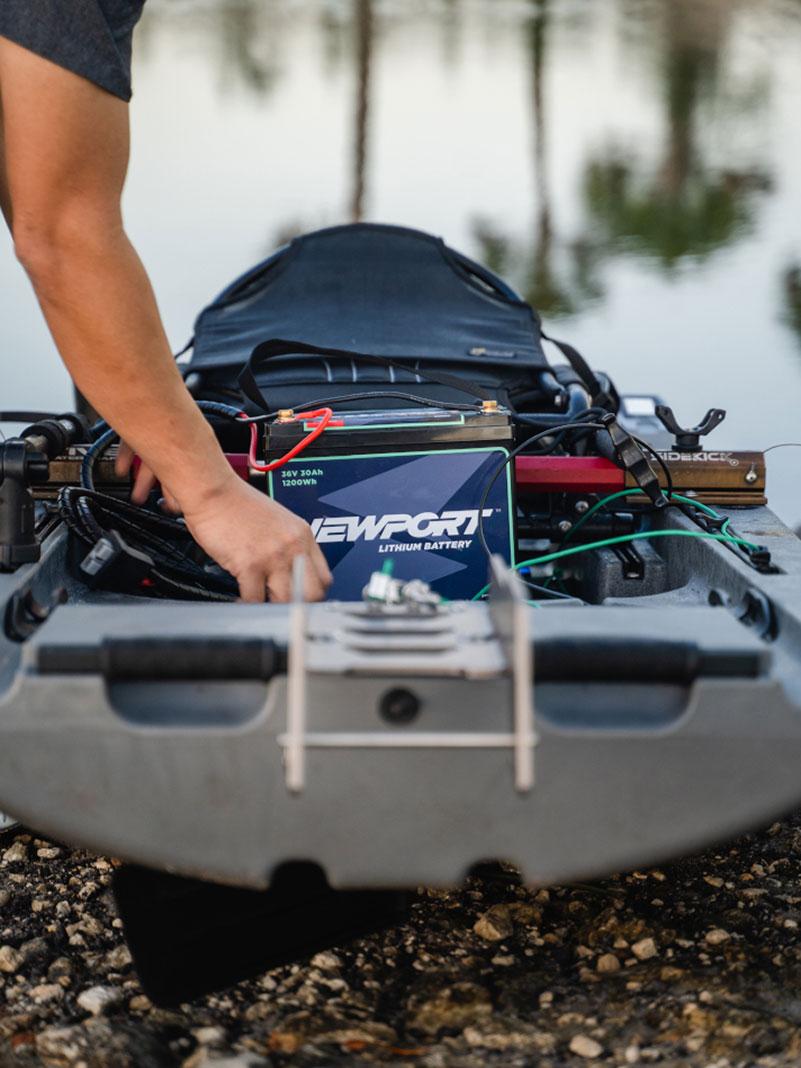
The second number is amp hours (Ah). That’s the battery’s run time. A 100 Ah battery lasts longer than a 50 Ah battery.The final digit is the group number—or the battery’s physical dimensions. If you have space for a Group 31 battery, any manufacturer’s Group 31 battery fits.
To determine the volts, amp hours and group number, match the requirements of the accessories you plan to add.
Lithium vs Lead-Acid: Choosing a Battery for Kayak Fishing
For the past few years, lead acid and lithium batteries have been in a fistfight. Each type of battery gets in its licks and the match ends in a draw. To score a knockout, the choice comes down to price or convenience.
(Traditional) Lead-Acid Kayak Battery
To store electricity, lead-acid batteries use a chemical reaction between lead and acid. The best lead acid batteries for kayak fishing are sealed with a glass mat core that absorbs shock and won’t spill liquid. Price is the biggest advantage; lead acid batteries cost half the price of a lithium-ion battery. If you only use the kayak battery occasionally, a lead-acid battery is a great deal. However, if you’re into serious power and need the ultimate in reliability and efficiency, then a lithium-ion battery is for you.
Lithium Kayak Battery
Lithium batteries are one of the biggest technological advancements of our time. Using a chemical reaction that doesn’t require liquids or acids, lithium batteries store more energy in a smaller space with a longer life span. The list of advantages is long, but the most significant gains for kayak anglers are weight and durability.
Every ounce counts and a battery is the heaviest weight in the kayak. A lithium battery weighs about half of a similar-sized lead-acid battery. A lighter battery has less effect on the kayak’s speed and performance. I usually remove the battery between trips, so a lighter battery is easier to lift and carry.
Most importantly, lithium is tougher than lead acid. Lithium batteries are water and shock-resistant. Each cell on a lithium battery is sealed, so I can mount the battery in any position, even upside down.
For the longest life and best reliability, I can charge a lithium battery more often with a deeper charge and longer power output. As a result, lithium batteries last years longer than lead-acid.
In fact, a lithium battery outperforms lead acid in every category except price. A quality lithium battery costs about twice as much as a lead-acid battery. But if you use the battery often, the lithium-ion battery pays off.
Additional Kayak Battery Features
As if the weight savings and durability aren’t enough, many lithium batteries now feature Bluetooth connection to a smartphone application. Using my smartphone, I monitor battery charge, range, temperature and other information. Some apps include information on the battery’s life cycle. The lithium-ion battery is more reliable, and with the smartphone app, I know exactly where my battery stands.
As an added safety feature, lithium batteries have automatic protections against overcharging, undercharging and short circuits. The smartphone application includes readouts of any battery faults.
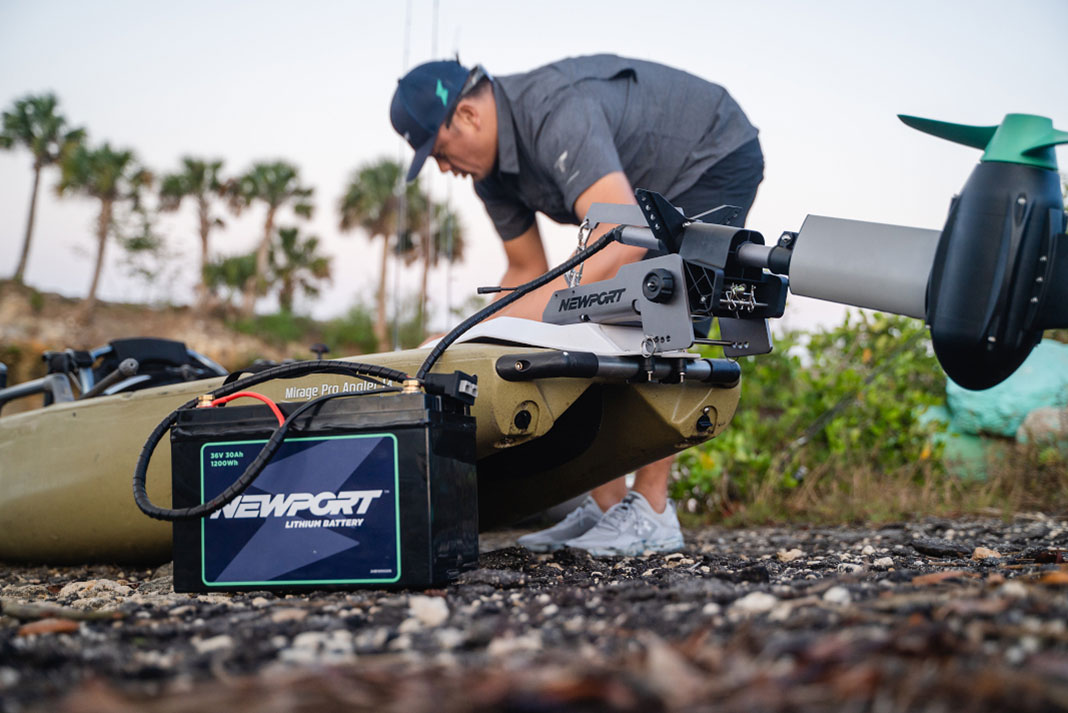
Best Battery for Kayak Trolling Motors
A small 33- to 55-pound-thrust kayak trolling motor runs off a 12-volt 50 amp-hour battery. Stepping up to a small electric outboard usually requires a 24-volt battery. A larger electric outboard calls for a 36-volt battery. The battery requirements are indicated by the manufacturer.
Best Battery for Kayak Fish Finders
To power accessories like a fish finder, phone charger and lights, a small 12-volt 10 amp hour battery takes care of the whole system. Anglers with trolling motors or electric motors often run the motor off a larger 12-volt and use a separate, smaller 12-volt battery to power their accessories. This strategy saves the larger battery for the motor and dedicates the smaller battery to fish finder, lights and USB chargers. In some cases, installing two batteries might be easier than running everything off one larger battery.
Kayak Battery Cost
Don’t think we didn’t notice the elephant in the room. The biggest difference between lithium and lead acid is price.
Lead acid batteries are significantly less expensive than lithium batteries. For example, a 12-volt, 50-Ah lithium battery costs about twice as much as a similar lead-acid battery. However, a lead acid battery may only last a couple of years, whereas the best lithium batteries have an 11-year warranty.
Mounting a Kayak Battery
One of the most important considerations is mounting the battery in the kayak. A small battery for the fish finder and lights should be mounted inside the hull and as close as possible to the accessories.
To prevent the battery from falling over and banging around inside the boat, build a battery holder. Take a piece of one-inch closed-cell foam (I use a gardening mat). Trace the base of the battery on the sheet of foam. Cut out the battery shape with a box opener. Then, glue the foam to the bottom of the kayak with silicone.
A larger battery for an electric motor is more difficult to fit on a small kayak. First, insert the battery into a battery box. The best battery box includes a fuse and power switch. Better boxes also have waterproof terminals.
Many kayaks are designed with space near the seat to fit a large battery box. To secure the heavy battery, strap it to tie-downs bolted or riveted into the kayak plastic. Be sure to place the battery where it serves as ballast to balance the weight of the motor.
To run multiple accessories from a single battery, install switches and fuses between the battery and the accessories. Run the power cable to the switch and then connect each accessory through a fuse bus. This way you can control the accessories from a single point. If you have an electric motor, It’s a good idea to include a power switch between the battery and the motor.
Kayak Battery FAQ
-
Does a kayak require a 12-volt battery to power electronics?
Most fish finders, lights and accessories run off 12-volt power. For example, I power my seven-inch sonar with a 12-volt, 10-Ah lithium-ion battery. I recharge the battery after each trip and I have never exhausted the power. Adding lights and a USB charger requires a 12-volt battery with a higher amp hour.
-
Is a kayak battery waterproof?
The best batteries for kayaks are water-resistant. Sealed lead acid batteries and lithium-ion batteries offer protection from damage and spills. To improve moisture resistance, mount the battery in a sealed battery box.
-
What size battery do I need for a kayak trolling motor?
Most 30- to 55-pound-thrust trolling motors call for a 12-volt battery. To run the motor all day, use at least a 50-Ah battery. To power a full array of electronics and still have enough juice to return to the launch, a 100 Ah is the best choice.
High-powered electric outboard motors produce more speed and greater torque, so they require a 24- or 36-volt battery. This is where a lithium battery really pays off with higher power output in a smaller, lighter package. Some electric outboards are matched to special batteries designed for optimum performance.
-
How do you mount a kayak battery?
Be sure to mount the battery out of the elements and near the kayak’s center of gravity. Use a battery box to protect the battery. Then, place it near the seat where the kayak is designed to carry the most weight. Keep cables short by mounting the battery close to the fish finder or motor.
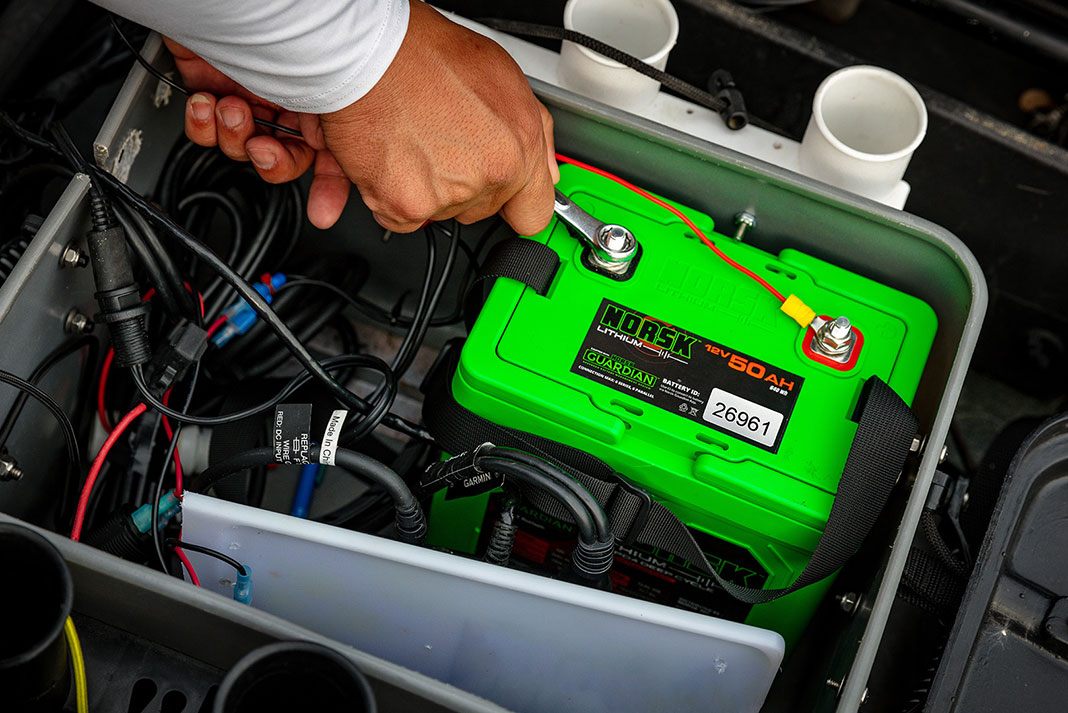
Kayak Battery Reviews
Feature photo: Courtesy Norsk Lithium

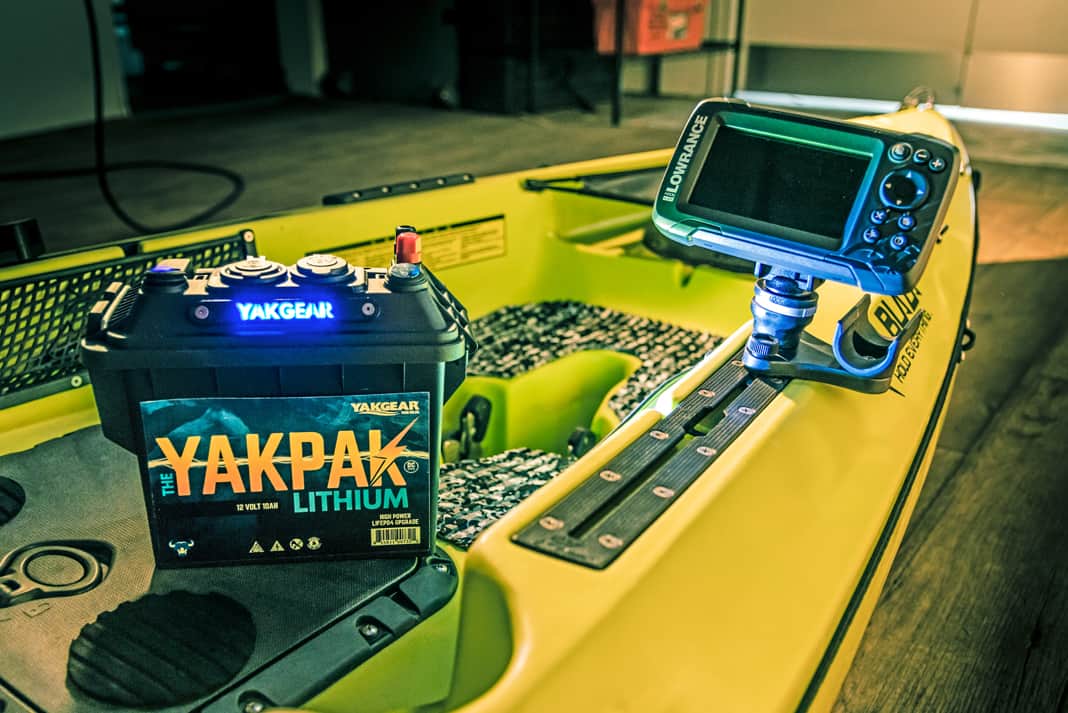
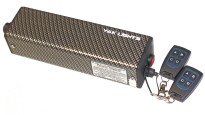


-copy-first_product_gear.jpg)
